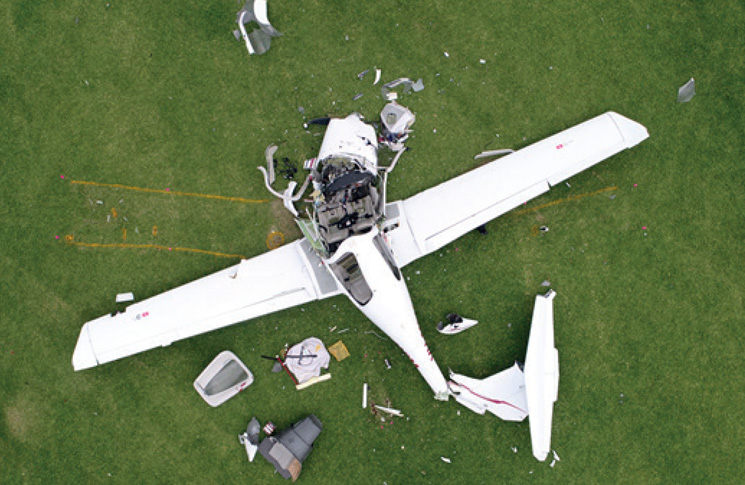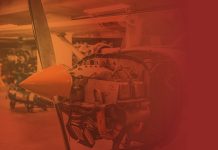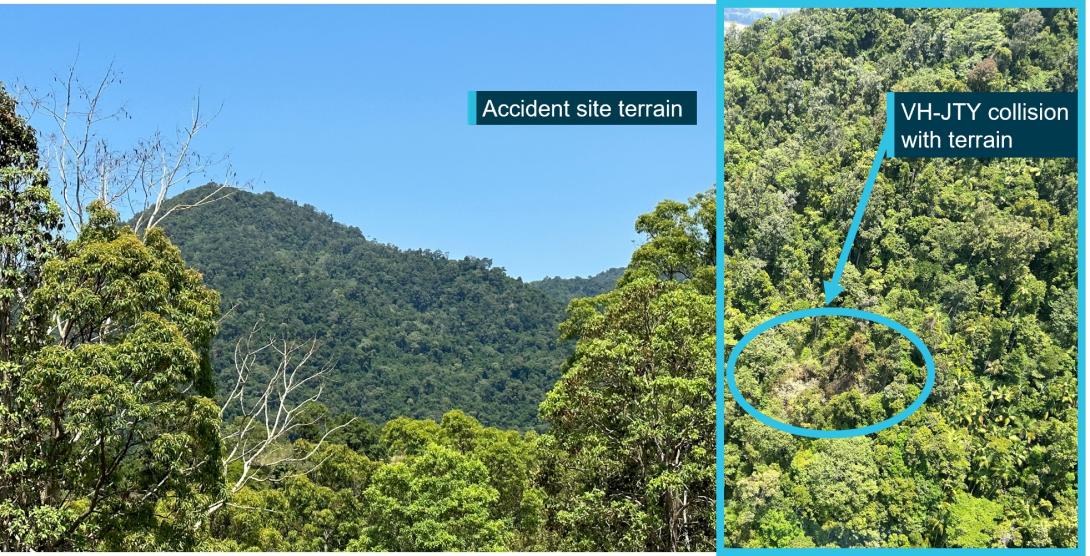The Australian Transport Safety Bureau (ATSB) has warned of the danger of conducting incipient spin training in aircraft not approved for intentional spins, after its investigation into the deaths of an instructor and student in Queensland in 2017.
The two men were on training flight in 26 September 2017, in a single engine Diamond DA40, taking off from Archerfield Airport, Queensland. The purpose of the flight was a simulated Recreational Pilot Licence (RPL) flight test to prepare the student for his RPL flight test.
In the words of the ATSB report, ‘The aircraft entered a developed spin during manoeuvres consistent with advanced stall recovery training which likely included intentional incipient spins. The spin continued until the aircraft collided with terrain.’
The instructor and student were killed, and the aircraft was destroyed.
An incipient spin that is not allowed to develop into a fully developed spin is commonly used as an introduction to spin training and spin recovery techniques.
Doing an incipient spin in an aeroplane that is not approved for spinning takes the aeroplane outside its normal operating envelope. When this happens, the aircraft is flying in the safety margins provided by the aeroplane certification standards for airframe structural integrity and demonstrated ability to recover from the manoeuvre.
However, the ATSB found there was no strict definition of where an incipient spin became developed, or of when spin entry became an incipient spin.
‘While CASA requires the demonstration of recovery from an incipient spin during flight tests, there is no clear and consistent definition of the point at which a manoeuvre becomes a spin—or incipient spin—for the purposes of flying training,’ the ATSB said.
The ATSB found that the aircraft limitation prohibiting intentional spins was intended to include incipient spins. However, the manoeuvre was not defined and some operators considered that the manoeuvre was not an intentional spin.
In addition, the aircraft was not certified for developed spin recovery, and the capability of the aircraft to recover from a developed spin had not been established nor was it required to be.
The ATSB found the instructor could not or did not prevent the aircraft from entering a developed spin, for reasons that could not be established.
The ATSB has issued a Safety Advisory Notice to advise training organisations to clarify with aircraft manufacturers the extent to which the intentional entry into the early stages of a spin, including an incipient spin, is permissible.
The DA40’s certification report stated that the aircraft exhibited prompt incipient spin recovery behaviour within the certification requirements. But Diamond was not required to and did not test the aircraft for fully developed spin behaviour and recovery.
The aircraft flight manual included a limitation stating that intentional spinning was not permitted in the aircraft.
Diamond told the ATSB, ‘The DA40 used in this accident is not approved for intentional spins, incipient or otherwise. Inducing a spin is outside of the approved envelope of the DA40.’
‘Using rudder deflection to enter an incipient spin, even if the aircraft is immediately recovered from that incipient spin, is an intentional spin and therefore not allowed to be performed with a DA40.’






Comments are closed.